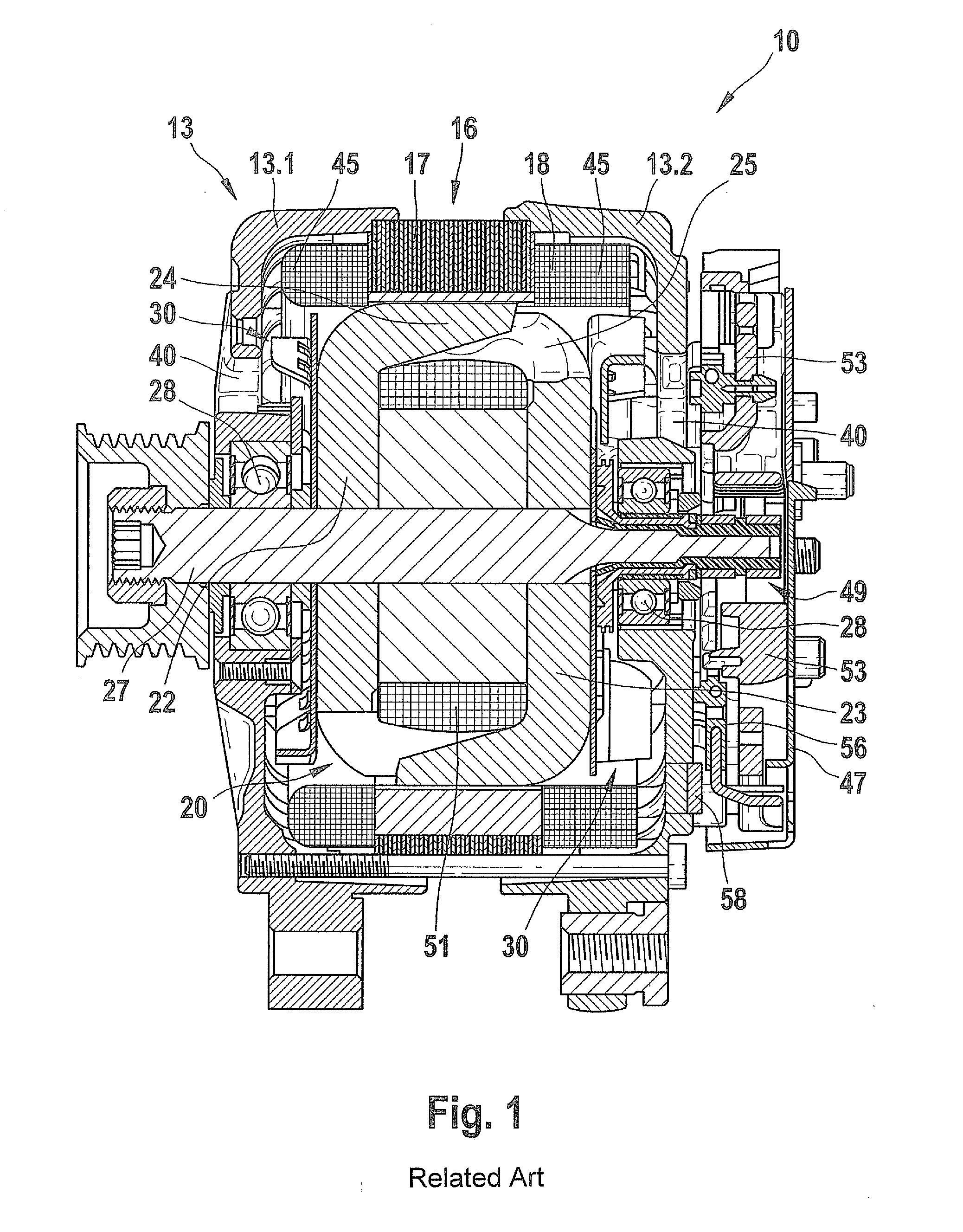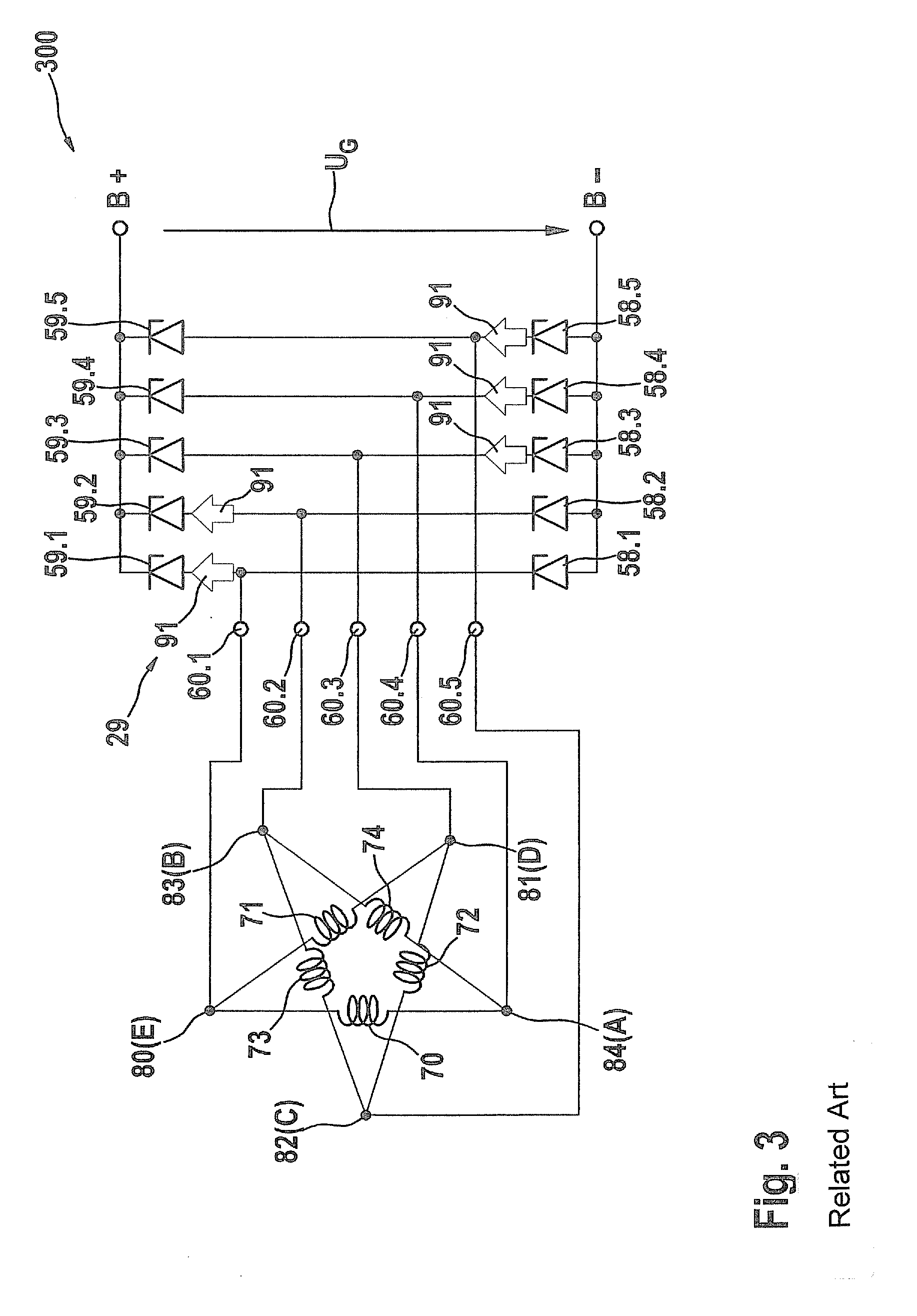Preventing load dump overvoltages in synchronous rectifiers,
a synchronous rectifier and load dump technology, applied in the direction of electric generator control, safety/protection circuit, dynamo-electric converter control, etc., can solve the problems of sudden reduction, inability to compensate for sudden reduction, and inability to recreate properties to 100%, etc., to achieve low cost, simple activation, and low cost
- Summary
- Abstract
- Description
- Claims
- Application Information
AI Technical Summary
Benefits of technology
Problems solved by technology
Method used
Image
Examples
Embodiment Construction
[0031]FIG. 1 shows a section through an alternating current generator 10 for motor vehicles according to the related art in which the method according to the present invention may be implemented.
[0032]The generator has a two-part housing 13 including a first end bracket 13.1 and a second end bracket 13.2. End bracket 13.1 and end bracket 13.2 accommodate a stator 16 having an annular lamination stack 17 into which a stator winding 18 is introduced. Stator 16 surrounds a rotor 20 with its radially internally oriented surface.
[0033]Rotor 20 has two claw-pole circuit boards 22 and 23 having claw-pole fingers 24 and 25 on their respective peripheries.
[0034]Both claw-pole circuit boards 22 and 23 are situated in such a way that their respective claw-pole fingers 24 and 25 alternate as north and south poles at the circumference of rotor 20.
[0035]Rotor 20 is rotatably mounted in particular end brackets 13.1 and 13.2 with the aid of a shaft 27 and each of rolling-contact bearings 28 located...
PUM
 Login to View More
Login to View More Abstract
Description
Claims
Application Information
 Login to View More
Login to View More - R&D
- Intellectual Property
- Life Sciences
- Materials
- Tech Scout
- Unparalleled Data Quality
- Higher Quality Content
- 60% Fewer Hallucinations
Browse by: Latest US Patents, China's latest patents, Technical Efficacy Thesaurus, Application Domain, Technology Topic, Popular Technical Reports.
© 2025 PatSnap. All rights reserved.Legal|Privacy policy|Modern Slavery Act Transparency Statement|Sitemap|About US| Contact US: help@patsnap.com



